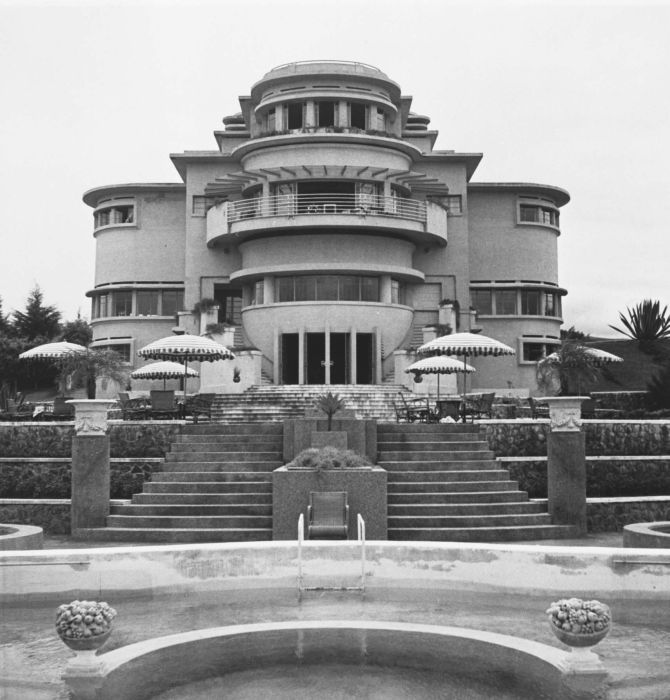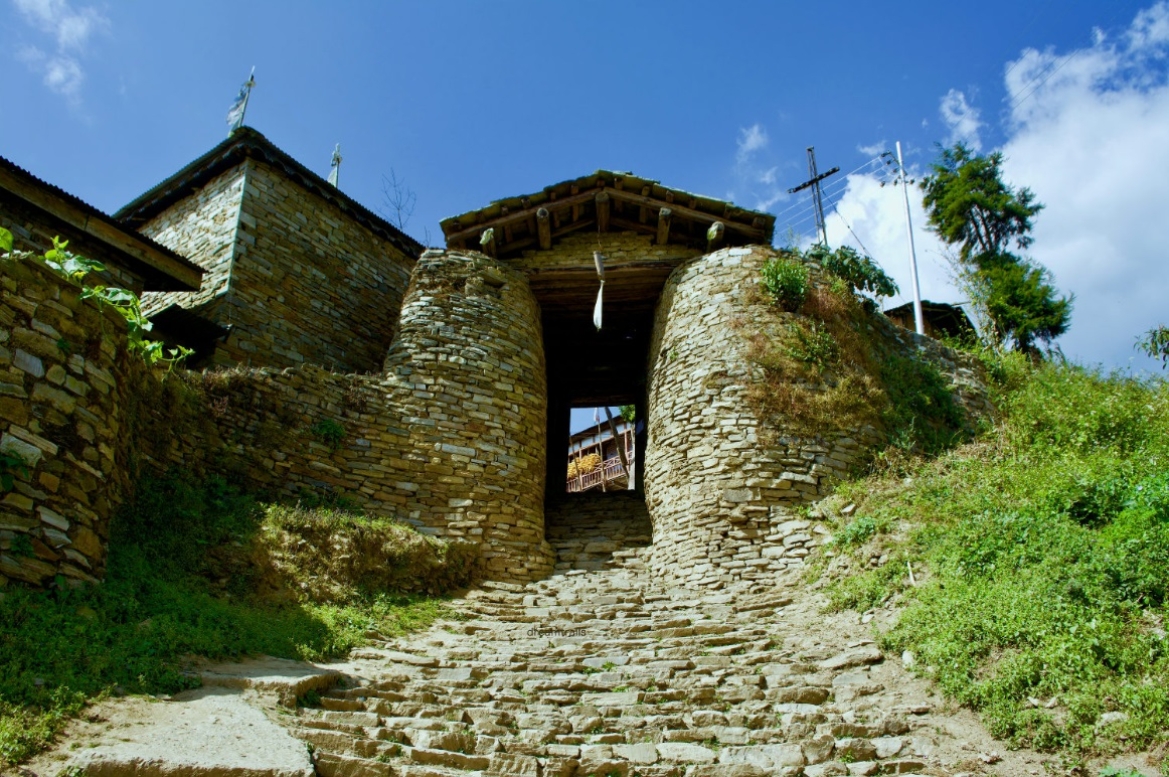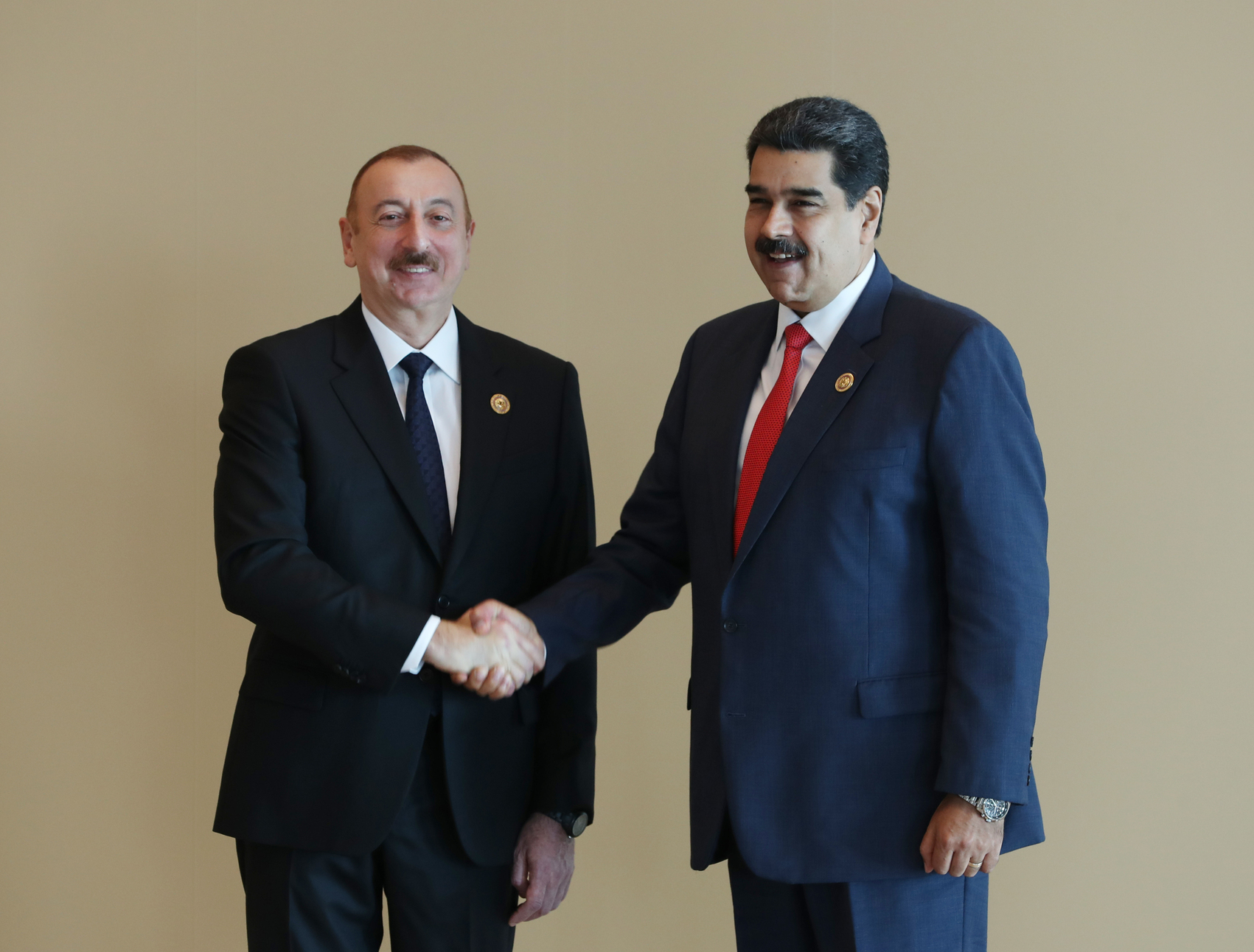|
Five Principles Of Peaceful Coexistence
The Five Principles of Peaceful Coexistence () are the Chinese government's foreign relations principles first mentioned in the 1954 Sino-Indian Agreement. Also known as Panchsheel (Hindi for "five principles"), these principles were subsequently adopted in a number of resolutions and statements, including the preamble to the Constitution of the People's Republic of China. Principles The Five Principles, as stated in the Sino–Indian Agreement 1954, are: # mutual respect for each other's territorial integrity and sovereignty, # mutual non aggression, # mutual non-interference in each other's internal affairs, # equality and co-operation for mutual benefit, and # peaceful co-existence These principles are a strict interpretation of the Westphalian norms of state sovereignty. Since its inclusion in the Five Principles, China has emphasized non-interventionism as major principle of its foreign policy. History The Panchsheel agreement served as one of the most important ... [...More Info...] [...Related Items...] OR: [Wikipedia] [Google] [Baidu] |
Government Of China
The government of the People's Republic of China is based on a system of people's congress within the parameters of a unitary communist state, in which the ruling Chinese Communist Party (CCP) enacts its policies through people's congresses. This system is based on the principle of unified state power, in which the legislature, the National People's Congress (NPC), is constitutionally enshrined as "the highest state organ of power." As China's political system has no separation of powers, there is only one branch of government which is represented by the legislature. The CCP through the NPC enacts unified leadership, which requires that all state organs, from the Supreme People's Court to the State Council of China, are elected by, answerable to, and have no separate powers than those granted to them by the NPC. By law, all elections at all levels must adhere to the leadership of the CCP. The CCP controls appointments in all state bodies through a two-thirds majority in t ... [...More Info...] [...Related Items...] OR: [Wikipedia] [Google] [Baidu] |
Bandung
Bandung is the capital city of the West Java province of Indonesia. Located on the island of Java, the city is the List of Indonesian cities by population, fourth-most populous city and fourth largest city in Indonesia after Jakarta, Surabaya, and Medan. Greater Bandung (Bandung Basin Metropolitan Area / BBMA) is the country's second-largest and second most populous List of metropolitan areas in Indonesia, metropolitan area, with over 11 million inhabitants. Situated above sea level (the highest point in the North area is at an altitude of , and the lowest in the South at above sea level), approximately southeast of Jakarta, Bandung has cooler year-round temperatures than most other List of cities in Indonesia, Indonesian cities. The city lies in a river basin surrounded by volcanic mountains that provide a natural defense system, which was the primary reason for the Dutch East Indies government's plan to move the capital from Batavia (modern-day Jakarta) to Bandung. The D ... [...More Info...] [...Related Items...] OR: [Wikipedia] [Google] [Baidu] |
Ministry Of Foreign Affairs Of The People's Republic Of China
The Ministry of Foreign Affairs of the People's Republic of China is the first-ranked Ministries of the People's Republic of China, executive department of the State Council of China, responsible for the country's Foreign relations of China, foreign relations. It is led by the Minister of Foreign Affairs (China), minister of foreign affairs, currently Wang Yi (politician), Wang Yi, who serves as the nation's principal representative abroad. The ministry is headquartered in Chaoyang, Beijing, the country's primary diplomatic quarter. The MFA's primary functions include formulating Foreign policy of China, foreign policy, administering the nation's diplomatic missions, representing Chinese interests at the United Nations, negotiating foreign treaties and agreements, and advising the State Council on foreign affairs. The Ministry is subordinate to the Central Foreign Affairs Commission, which decides on policy-making and led by General Secretary of the Chinese Communist Party. For ... [...More Info...] [...Related Items...] OR: [Wikipedia] [Google] [Baidu] |
Atal Bihari Vajpayee
Atal Bihari Vajpayee (25 December 1924 – 16 August 2018) was an Indian poet, writer and statesman who served as the prime minister of India, first for a term of 13 days in 1996, then for a period of 13 months from 1998 to 1999, followed by a full term from 1999 to 2004. He was the first non-Congress prime minister to serve a full term in the office. Vajpayee was one of the co-founders and a senior leader of the Bharatiya Janata Party (BJP). He was a member of the Rashtriya Swayamsevak Sangh (RSS), a far-right Hindu nationalist paramilitary volunteer organisation. He was also a Hindi poet and a writer. He was a member of the Indian Parliament for over five decades, having been elected ten times to the Lok Sabha, the lower house, and twice to the Rajya Sabha, the upper house. He served as the Member of Parliament from Lucknow, Gwalior, New Delhi and Balrampur constituencies, before retiring from active politics in 2009 due to health concerns. He was ... [...More Info...] [...Related Items...] OR: [Wikipedia] [Google] [Baidu] |
Sino-Indian War
The Sino–Indian War, also known as the China–India War or the Indo–China War, was an armed conflict between China and India that took place from October to November 1962. It was a military escalation of the Sino–Indian border dispute. Fighting occurred along India's border with China, in India's North-East Frontier Agency east of Bhutan, and in Aksai Chin west of Nepal. There had been a series of border skirmishes between the two countries after the 1959 Tibetan uprising, when India granted asylum to the Dalai Lama. Chinese military action grew increasingly aggressive after India rejected proposed Chinese diplomatic settlements throughout 1960–1962, with China resuming previously banned "forward patrols" in Ladakh after 30 April 1962. Amidst the Cuban Missile Crisis, seeing that the U.S. was pre-occupied with dealing with it, China abandoned all attempts towards a peaceful resolution on 20 October 1962,''Webster's Encyclopedic Unabridged Dictionary of the English ... [...More Info...] [...Related Items...] OR: [Wikipedia] [Google] [Baidu] |
Arunachal Pradesh
Arunachal Pradesh (; ) is a States and union territories of India, state in northeast India. It was formed from the North-East Frontier Agency (NEFA) region, and India declared it as a state on 20 February 1987. Itanagar is its capital and largest town. It borders the Indian states of Assam and Nagaland to the south. It shares Borders of India, international borders with Bhutan in the west, Myanmar in the east, and a disputed 1,129 km border with China's Tibet Autonomous Region in the north at the McMahon Line. Arunachal Pradesh is claimed in its entirety by China as South Tibet as part of the Tibet Autonomous Region; China Sino-Indian War, occupied some regions of Arunachal Pradesh in 1962 but later withdrew its forces. As of the 2011 Census of India, Arunachal Pradesh has a population of 1,383,727 and an area of . With only 17 inhabitants per square kilometre, it is the least densely populated state of India. It is an ethnically diverse state, with predominantly Monpa p ... [...More Info...] [...Related Items...] OR: [Wikipedia] [Google] [Baidu] |
South Tibet
Southern Tibet is a literal translation of the Chinese term "" (), which may refer to different geographic areas: The southern part of Tibet, covering the middle reaches of the Yarlung Tsangpo River Valley between Saga County to the west and Mainling County to the east, as well as neighbouring areas located between the Himalayas to the south and the Transhimalayas range to the north. The region extends around 1,000 km from west to east and 300 km from north to south. By this definition, Southern Tibet includes most of modern-day Shigatse, Lhasa, Lhoka (Shannan) Prefecture and Nyingchi Prefecture. Southern Tibet may also refer to a shorter section of the Yarlung Tsangpo and tributaries covering most of Lhoka and Nyingchi Prefectures from the confluence with the Lhasa River to the west up to the beginning of the Yarlung Tsangpo Grand Canyon near Mainling County to the east. When used in relation to the Sino-Indian border dispute, Southern Tibet is a term mainly used by the People ... [...More Info...] [...Related Items...] OR: [Wikipedia] [Google] [Baidu] |
Aksai Chin
Aksai Chin is a region administered by China partly in Hotan County, Hotan Prefecture, Xinjiang, and partly in Rutog County, Ngari Prefecture, Tibet Autonomous Region, Tibet, and constituting the easternmost portion of the larger Kashmir region that has been the subject of a dispute between India and China since 1959. The application of the term "administered" to the various regions of Kashmir and a mention of the Kashmir dispute is supported by the WP:TERTIARY, tertiary sources (a) through (e), reflecting WP:DUE, due weight in the coverage. Although "controlled" and "held" are also applied neutrally to the names of the disputants or to the regions administered by them, as evidenced in sources (h) through (i) below, "held" is also considered politicized usage, as is the term "occupied," (see (j) below). (a) (subscription required) Quote: "Kashmir, region of the northwestern Indian subcontinent ... has been the subject of dispute between India and Pakistan since the partition o ... [...More Info...] [...Related Items...] OR: [Wikipedia] [Google] [Baidu] |
Delhi
Delhi, officially the National Capital Territory (NCT) of Delhi, is a city and a union territory of India containing New Delhi, the capital of India. Straddling the Yamuna river, but spread chiefly to the west, or beyond its Bank (geography), right bank, Delhi shares borders with the state of Uttar Pradesh in the east and with the state of Haryana in the remaining directions. Delhi became a union territory on 1 November 1956 and the NCT in 1995. The NCT covers an area of . According to the 2011 census, Delhi's city proper population was over 11 million, while the NCT's population was about 16.8 million. The topography of the medieval fort Purana Qila on the banks of the river Yamuna matches the literary description of the citadel Indraprastha in the Sanskrit epic ''Mahabharata''; however, excavations in the area have revealed no signs of an ancient built environment. From the early 13th century until the mid-19th century, Delhi was the capital of two major empires, ... [...More Info...] [...Related Items...] OR: [Wikipedia] [Google] [Baidu] |
Xinhua News Agency
Xinhua News Agency (English pronunciation: ),J. C. Wells: Longman Pronunciation Dictionary, 3rd ed., for both British and American English or New China News Agency, is the official state news agency of the People's Republic of China. It is a ministry-level institution of the State Council. Founded in 1931, it is the largest media organ in China. Xinhua is a publisher, as well as a news agency; it publishes in multiple languages and is a channel for the distribution of information related to the Chinese government and the ruling Chinese Communist Party (CCP). Its headquarters in Beijing are located close to the central government's headquarters at Zhongnanhai. Xinhua tailors its pro-Chinese government message to the nuances of each international audience. The organization has faced criticism for spreading propaganda and disinformation and for criticizing people, groups, or movements critical of the Chinese government and its policies. History The predecessor to Xinhua ... [...More Info...] [...Related Items...] OR: [Wikipedia] [Google] [Baidu] |
Yugoslavia
, common_name = Yugoslavia , life_span = 1918–19921941–1945: World War II in Yugoslavia#Axis invasion and dismemberment of Yugoslavia, Axis occupation , p1 = Kingdom of SerbiaSerbia , flag_p1 = State Flag of Serbia (1882-1918).svg , p2 = Kingdom of MontenegroMontenegro , flag_p2 = Flag of the Kingdom of Montenegro.svg , p3 = State of Slovenes, Croats and Serbs , flag_p3 = Flag of the State of Slovenes, Croats and Serbs.svg , p4 = Austria-Hungary , flag_p4 = Flag of Austria-Hungary (1867-1918).svg , p7 = Free State of FiumeFiume , flag_p7 = Flag of the Free State of Fiume.svg , s1 = Croatia , flag_s1 = Flag of Croatia (1990).svg , s2 = Slovenia , flag_s2 = Flag of Slovenia.svg , s3 ... [...More Info...] [...Related Items...] OR: [Wikipedia] [Google] [Baidu] |
Non-Aligned Movement
The Non-Aligned Movement (NAM) is a forum of 121 countries that Non-belligerent, are not formally aligned with or against any major power bloc. It was founded with the view to advancing interests of developing countries in the context of Cold War confrontation. After the United Nations, it is the largest grouping of states worldwide. The movement originated in the aftermath of the Korean War, as an effort by some countries to counterbalance the rapid bi-Polarity (international relations), polarization of the world during the Cold War, whereby two major powers formed blocs and embarked on a policy to pull the rest of the world into their orbits. One of these was the pro-Soviet socialist bloc whose best known alliance was the Warsaw Pact, and the other the pro-American capitalist group of countries, many of which belonged to NATO. In 1961, drawing on the principles agreed at the Bandung Conference of 1955, the Non-Aligned Movement was formally established in Belgrade, Socialist Fe ... [...More Info...] [...Related Items...] OR: [Wikipedia] [Google] [Baidu] |







